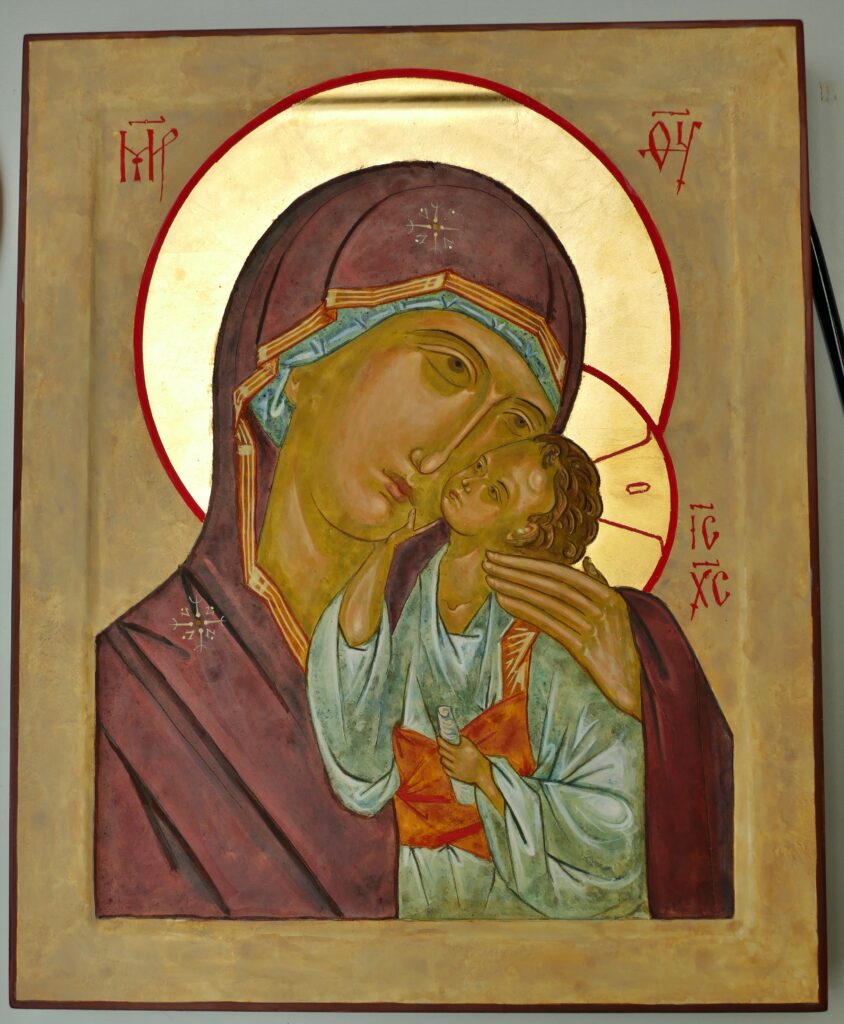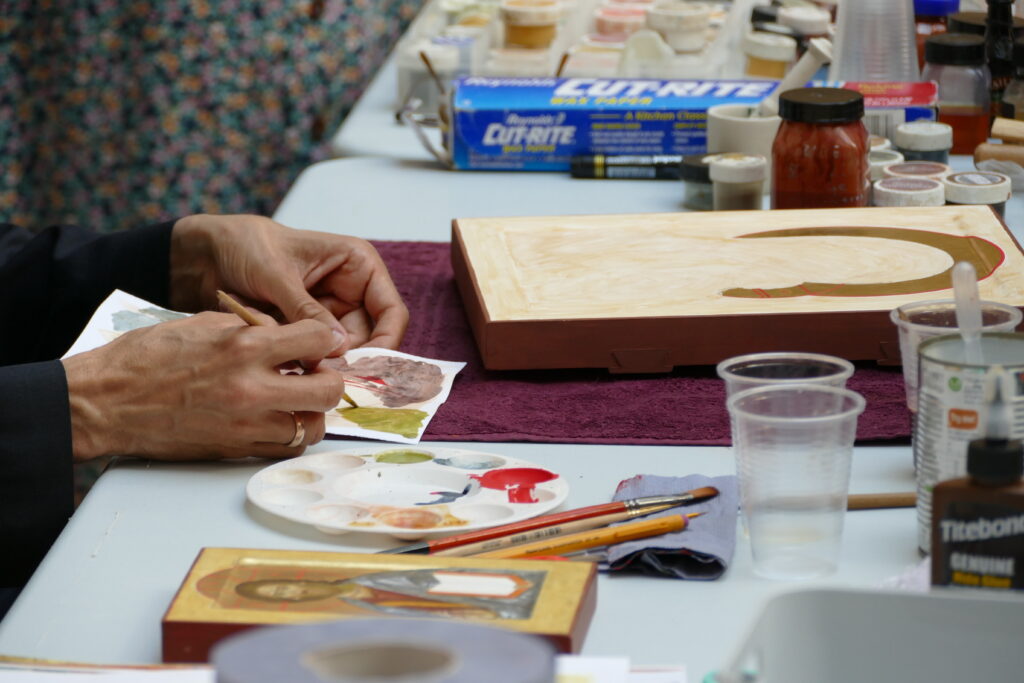6th July 2023
Iconography, imago Dei and identity
How the ancient art of iconography symbolises man’s relationship with God
By Gabriel Stirling
It has just gone 9 am, and fifteen iconographers have gathered in the atrium of Theodore House. For the next week, they will study the ancient art of iconography under the guidance of Deacon Nikita Andrejev of the Prosopon School of Iconography. For the next week, they will gather each morning to pray that God might glorify the work of their hands. Through the strokes of the brush, they hope that the light of God might touch the blank canvas.
The first thing I learned was not to call it icon painting. You do not paint an icon; you write them. More than just mere pigments spotted on a canvas, the icon is the Gospel drawn out.
Right from the outset, the religious symbolism of the icon dominates the methods and techniques used. The students began with a blank board made of gesso, representing, according to Nikita, “the moment before the creation of the world where there was just the divine.” But as God formed the heavens and the earth by His hands, so too our iconographers transformed these blank boards into a holy image of Divine realities.
All the materials used in icon writing are natural. The paint is based on diluted egg yolk mixed with natural pigments. As the colours took shape, the students slowly added lines to their icons. We had moved beyond the first part of creation, where light, colour, and matter existed. Figures start to emerge from the dust of the board, a firmament creating definitive shapes.
Icon writing is not easy, and mistakes happen along the way. Likewise, being a Christian is a challenge, and we all fall into temptation at times. But as much as we wish, neither the icon writer nor the sinner can rewrite the past. However, the future is still up for grabs, and just as repentance sees us turn from our past wrongs to God, a slip of the icon writer’s brush can be turned into something greater. “This is a process of transfiguration,” says Nikita.
The reason why iconography is so captivating might be that it speaks so deeply about human existence. It takes us right from the beginning, the formless void of the gesso board, right through the beauty of creation. But it shows us something about ourselves, too. We are not blank automatons, but men and women created in the image of God. Thus, humans are in a sense the proto-icon, created out of dust in the likeness of God.
By Monday morning, the last day, the icons were almost complete—the shining crown of the Virgin Mother and Christ, their loving eyes gazing at us. Not unlike man, these icons are in the image of God. The icon writing might be over, but the writing of our souls remains an ongoing task. As Nikita put it: “We are born with the image of God intact as an embryo, but this likeness is yet to be achieved.”
Oh, blessed Virgin, pray that we might share in the likeness of your Son!
The Ancient Byzantine Iconography Course returns in 2024 from 3rd to 10th June: click here for more information


